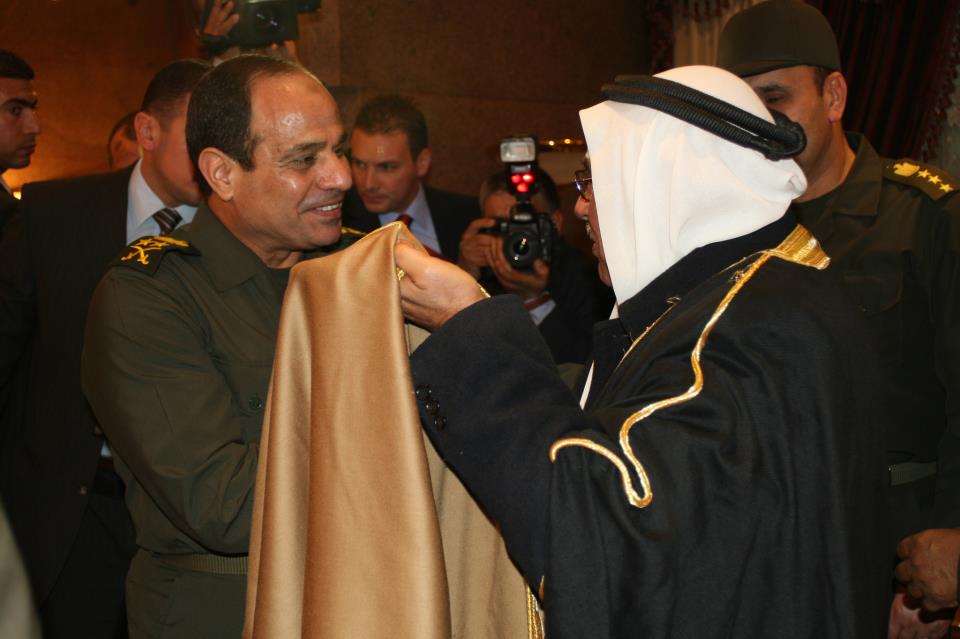Renaissance man captures a different side of Egypt
With camera and sketchbook in hand, Dr. Farid Fadel headed to the Siwa Oasis on what he calls his first artistic mission. The result is the collection Desert, Oasis, and Valley currently showing at El-Hanager Art Center.
Fadel s popularity as an artist is a combination of his pleasant character and accessible style of art. From the ruins of Kasr Labakha peeking from behind a grove of palm trees, a sculpted rock stands lonely and desolate against a vast desolate desert landscape.
The collection of 69 pieces is considerable and ranges from oil paintings of large landscapes to still-lifes in oil, from portraiture sketches to Nubian architecture.
Overall, the work is picturesque and quaint, reminiscent of the troupe of artists that accompanied Napoleon Bonaparte in 1798 to chronicle Egyptian life and history in the “Descriptions de L Egypte.
Fadel too documents scenes from the Western Desert and the monasteries of the Eastern Desert.
One visitor commented that each of Fadel s exhibitions holds a surprise. When asked what he believed was the element of surprise that this collection held, he responded, Going to a completely secluded place, known only to desert freaks.
In the past, Fadel has painted scenes of the Nile and beaches, but – as he puts it – he hadn t been a fan of the desert. However, he was surprised to discover the wisdom of the desert and its richness.
To unearth this wisdom, you need patience, inner peace and wise perspective on life, he explains.
He s an artist who is always experimenting, says Yasmine Saleh, who has followed the artist s work over the years and was even the subject of his Egyptian Mona Lisa, which was shown a few years ago in a collection of Fadel s work commemorating Leonardo da Vinci.
Artist Nabil Makar agrees, Farid Fadel has too many faces . each time he surprises us with a new idea.
The detail in his work reflects the inspiration of Renaissance style that endeavors to capture beauty. Farid Fadel is a high-standing artist who believes in nature, and to paint everything he likes, adds artist George Bahgoory. But he must come through the reality of things and create a new vision.
This vision is filtered through Fadel s personality. Immediately upon meeting him, you are struck by his good looks and charm. It s hard to imagine the well-groomed, handsome man in a suit roughing it in the desert. Though the desert sand surely left a telltale dusty residue, somehow it s not surprising to see a photograph of the artist in the exhibition brochure sketching the Begawat ruins in a neatly pressed blue shirt.
Though a lot of attention is paid to details, the artist uses creative license to embellish the green color in the fronds of a palm tree, to color the camels saddles a vibrant green-blue, or to play with the lighting to highlight the hues of pink in the desert sky.
Fadel directs his subjects. Aisha in Prayer captures a woman with her arms held up in supplication with the words ya rab (oh God) etched on the wall behind her. And the portraits of the desert Bedouin are almost regal in their pose.
The artist is often described as a Renaissance man, referring partially to his stylistic tendencies but also to his various interests. Aside from his active social life, Fadel is a practicing ophthalmologist, a musician – he has studied violin and piano – as well as a singer. And let s not forget that he dabbles in art in his spare time.
I used to be an ophthalmologist-artist, explains Fadel, but not anymore. These days, the artist dedicates more time to his sketchbooks and canvasses, spending time at his easel every day.
A majority of his work has been described by visitors as traditional and quaint. Even from among the large collection, a handful of pieces compete to stand out from the gallery walls.
The domestic interior still-life of Siwan baskets hanging from a wooden pole reflects Fadel s eye for detail and use of contrasting light to create beauty from the mundane. A sketch of two girls, gallabeyas slightly lifted, walking through tall grass with their backs to the artist, captures a carefree moment.
Fadel s work could easily double as postcards, luring visitors to the deserts and oases. However, given his commitment to beauty, would reality live up to our expectations?
Desert, Oasis and Valley: Farid FadelEl Hanager Art CenterCairo Opera House groundsEl-Gezeira, CairoRunning until November 21
